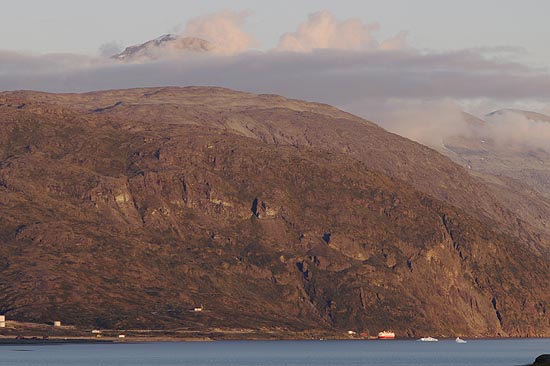StoneSuch boulders, often neatly placed atop smaller stones, are leftovers by the ice that once covered the area. The stone was traveling in the surrounding ice and hit the ground, when the warming made the glacier disappear. The smaller stuff was then washed off by the elements, the big one remained. |
Ice surfaceOn its final way Kuussuup Glacier squeezes through the closing gap between Mellem Landet and Johan Dahl Land. Melting, of course, happens not only at the very end of the tongue. Meltwater flows beneath the ice, on top of it, and in internal channels. The surface structure seen in this photograph indicates severe melting, which is no wonder during summer.
|












